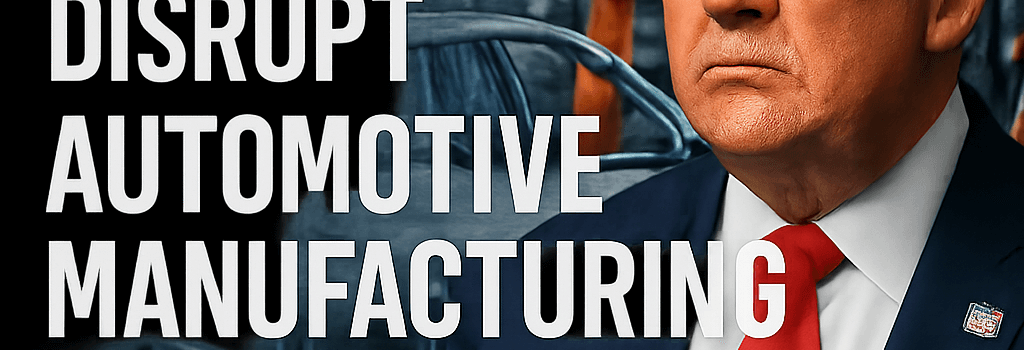Trump’s Policies Disrupt Automotive Manufacturing

An Ill Wind Blows Through North America’s Auto Industry
In Q2 2025, Rivian reported a negative gross margin for the first time in two years, projecting full-year losses 15% above prior guidance. A day earlier Lucid, backed by Saudi investment, missed revenue targets by 12% and announced a 25% cut to its 12,000-unit production plan. Behind both disappointments lies a confluence of new trade and environmental policies enacted since January.
Key Policy Changes in 2025
- IRS Clean Vehicle Tax Credit expiration on September 30 removes up to $7,500 incentives per EV purchase.
- Suspension of EV infrastructure funding: $1.2 billion clawed back from state fast-charger grants.
- Fuel-efficiency fine waivers allow OEMs to exceed Corporate Average Fuel Economy (CAFE) targets without penalties.
- New import tariffs: 15% on Canadian and Mexican auto parts, 25% on EU and Japanese vehicles.
“Our teams have shown resilience, but macro headwinds—from tariffs to tax credit rollbacks—are squeezing margins and slowing EV adoption,” said Mary Barra, GM CEO, on the Q2 earnings call.
Tariff Shock Across the Supply Chain
Decades of North American Free Trade Agreement (NAFTA) integration built a cross-border ecosystem: steel, aluminum, semiconductors, battery cells and wiring harnesses crisscross the US–Canada–Mexico corridor up to six times per vehicle. Today, each crossing invokes a 15% levy, inflating input costs by an estimated $2,500–$3,200 per EV.
OEM Financial Impact
- General Motors: $1.1 billion extra in Q2; forecast $5 billion by year-end.
- Ford Motor Co.: up to $2 billion in additional import duties on raw materials and subassemblies.
- Stellantis (Jeep, Ram): $2.7 billion tariff hit YTD, partly offset by zero CAFE fines.
- Volkswagen Group: $1.5 billion cost increase; revised down full-year EBIT margin to 6.2% from 7.5%.
Supply Chain and Manufacturing Shifts
Impact on Battery Raw Materials
China supplies over 70% of global lithium-ion cathode precursors. Tariffs on imported lithium hydroxide and nickel sulfate surged 20%, forcing OEMs to stockpile or vertically integrate. Tesla’s 35 GWh Gigapress expansion in Nevada is in part a hedge against cross-border duty costs.
Vertical Integration vs. Outsourcing
Legacy automakers are revisiting just-in-time logistics. GM’s Ultium Cells LLC joint venture in Ohio increases control over cell pricing, while Ford accelerates in-house stamping and battery module assembly to reduce exposure to 15% import levies on subassemblies.
Technical Deep Dive: EV Cost Structure
Battery Pack Cost Breakdown
- Cells: ~35% of pack cost (~$100–$110/kWh)
- Module assembly: 15% (labor, housing)
- Thermal management: 10% (cooling plates, sensors)
- Battery management system (BMS): 8% (semiconductors, software)
- Tariffs and logistics: up to 12% increase on components
At a pack level cost of $12,000 for a 100 kWh system, a 15% tariff adds $1,800—often outstripping narrow-margin ICE powertrains.
Geopolitical Ramifications and Future Outlook
Policy Forecast Ahead of 2026 Elections
With midterms looming, industry analysts at IHS Markit warn of “regulatory whiplash” if tariffs and tax credits toggle with each administration. The Biden campaign has signaled intentions to restore EV credits and negotiate lower North American content rules.
Expert Opinion
“Without a stable policy framework, capital expenditures in EV production lines and battery plants will stall,” says Dr. Elena Ramirez, Senior Fellow at the Center for Automotive Research.
Strategies for OEM Resilience
To adapt, automakers are:
- Diversifying supply chains to include Southeast Asia and domestic mining projects.
- Investing in recycling technologies to reclaim $7–$9/kg in critical minerals.
- Leveraging modular platforms for rapid model reconfigurations—shifting capacity between ICE, hybrid and BEV as market signals change.
As the automotive industry navigates unpredictable tariff regimes and deregulation, the winners will be those with flexible manufacturing footprints, integrated battery supply, and robust financial hedges against policy volatility.